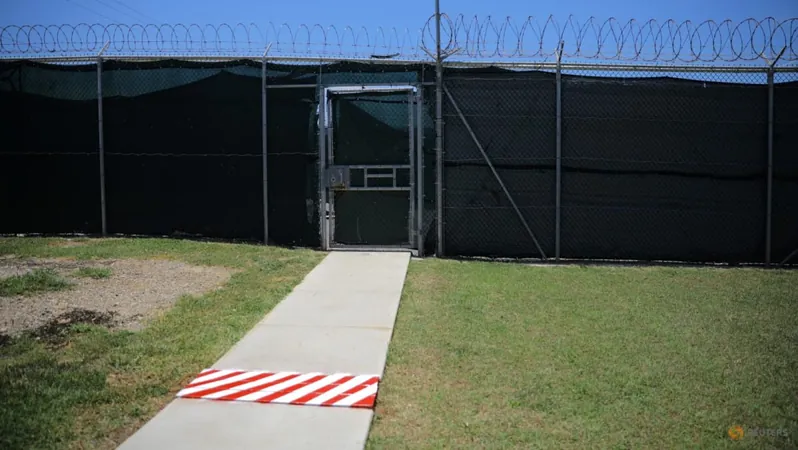
Alarming Discovery: Ghost Crabs Feast on Nearly 30% of Flatback Turtle Hatchlings on Thevenard Island!
2024-12-11
Author: Li
Alarming Discovery: Ghost Crabs Feast on Nearly 30% of Flatback Turtle Hatchlings on Thevenard Island!
In a worrying new study published in the journal Marine Biology, researchers from Edith Cowan University (ECU) and the Department of Biodiversity, Conservation and Attractions' North West Shelf Flatback Turtle Conservation Program have revealed that ghost crabs are responsible for the predation of nearly 30% of flatback turtle hatchlings at Thevenard Island, located off Onslow on Australia’s northwest coast.
Flatback turtles, known as a vulnerable species, inhabit Australian waters and nest at specific rookeries in the northern regions of Australia. These remarkable creatures come ashore to lay their eggs in clutches on sandy beaches and return to the ocean, leaving the eggs to incubate for seven to ten weeks. Unfortunately, both the eggs and hatchlings face significant threats from various predators.
Dr. Casper Avenant, an adjunct lecturer at ECU, emphasized the novelty of this research, stating, “While previous studies have noted predation in flatback turtle populations, this is the first study to quantify predation rates for both eggs and hatchlings, particularly on Thevenard Island.”
Interestingly, the research indicated a surprising finding: there was zero predation recorded on the turtle eggs themselves. In contrast, around 30% of the hatchlings that made it to the surface fell victim to ghost crabs, with additional threats from silver gulls and Caspian terns.
Professor Glenn Hyndes from ECU explained the complex ecosystem dynamics at play. “Ghost crabs are opportunistic omnivores, feeding on a range of items, including algae and carrion. However, they are particularly efficient predators of turtle eggs and hatchlings. In areas where ghost crabs are abundant, we see a significant uptick in predation rates,” he said.
Dr. Avenant noted that the unexpected lack of egg predation could be linked to the nesting habits of flatback turtles. It appears that female turtles choose nest locations that are out of reach for ghost crabs, or perhaps the composition of the flatback’s eggshells inherently deters predators. Remarkably, there were no indicators of predation disturbance in any of the nests monitored during the study on Thevenard Island.
When comparing the plight of the flatback turtles to that of loggerhead turtles along Western Australia’s Ningaloo coast, the situation looks more favorable for the flatbacks. Previous research indicated staggering predation rates, with over 35% of loggerhead turtle eggs predated in their nests, escalating to an astonishing 80% in certain rookeries. Furthermore, 45% of loggerhead hatchlings faced predation upon emergence.
This new research not only sheds light on the specific threats facing flatback turtles at Thevenard Island but also underscores the implications of predation by invasive species, such as foxes, which pose additional risks to vulnerable wildlife. As conservation efforts continue to evolve, understanding these ecological interactions becomes crucial for protecting these at-risk marine species.
Stay informed and engaged—our oceans and turtles are counting on you!





 Brasil (PT)
Brasil (PT)
 Canada (EN)
Canada (EN)
 Chile (ES)
Chile (ES)
 España (ES)
España (ES)
 France (FR)
France (FR)
 Hong Kong (EN)
Hong Kong (EN)
 Italia (IT)
Italia (IT)
 日本 (JA)
日本 (JA)
 Magyarország (HU)
Magyarország (HU)
 Norge (NO)
Norge (NO)
 Polska (PL)
Polska (PL)
 Schweiz (DE)
Schweiz (DE)
 Singapore (EN)
Singapore (EN)
 Sverige (SV)
Sverige (SV)
 Suomi (FI)
Suomi (FI)
 Türkiye (TR)
Türkiye (TR)